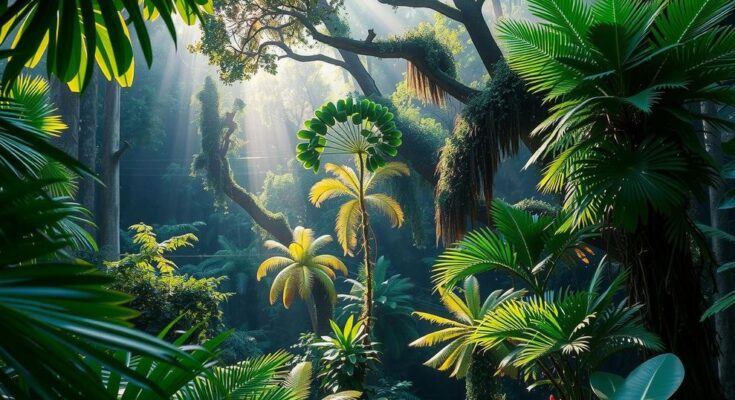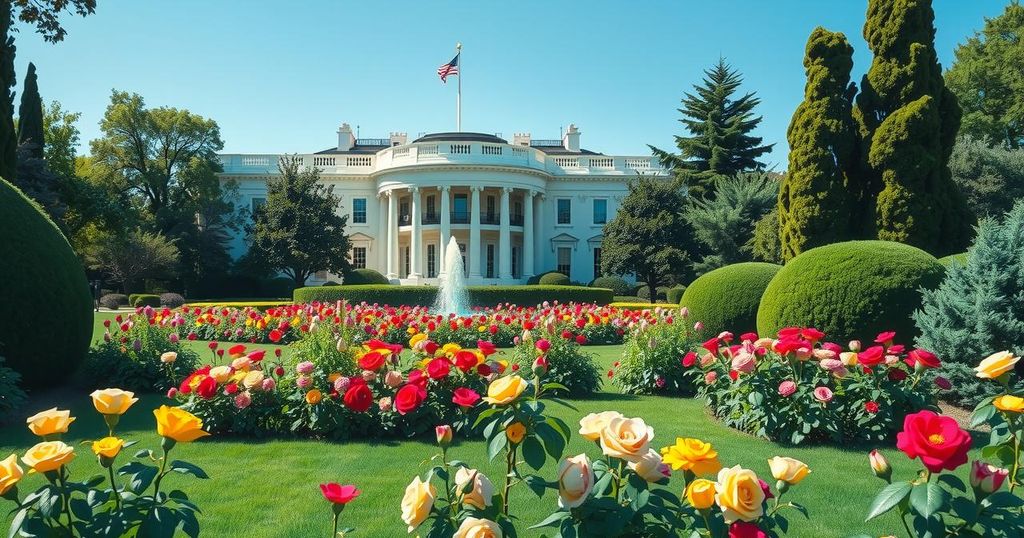Indigenous organizations have been calling for the establishment of Yavarí Mirim reserve to protect uncontacted tribes in the Peruvian Amazon. Recent delays have heightened concerns as encroachments from extractive industries intensify, putting these marginalized communities at risk. Efforts are underway to advocate for the reserve, but external pressures remain strong, complicating the realization of their protective status.
Since 2003, Indigenous organizations have advocated for the establishment of the Yavarí Mirim reserve, aimed at protecting isolated tribes in the Peruvian Amazon. This extensive reserve would cover approximately 1 million hectares and is increasingly threatened by extractive industries focused on logging and oil drilling. Recent delays in the establishment of this reserve heighten concerns for the safety of Indigenous groups vulnerable to logging and illegal activities.
Despite the calls for protection, the Peruvian government has yet to formalize the reserve. The Multi-Sector Commission, responsible for setting boundaries for Indigenous Peoples in Voluntary Isolation and Initial Contact, delayed a critical meeting set for February 14 to discuss the reserve’s borders. The commission claimed the area overlaps with another Native community’s claims, raising apprehensions about the motives behind this postponement.
Pablo Chota Ruiz, secretary of the Organization of Indigenous Peoples of the Eastern Amazon, criticized the commission’s justification for the delay, suggesting it is an excuse to defer the reserve’s establishment. He emphasized the presence of substantial commercial interests that oppose the reserve, as industrial logging and mineral extraction are lucrative prospects in the region.
In 2018, anthropological studies recognized several isolated tribes in the vicinity, including the Matsés and Matis. However, only a legally designated territory can protect these groups from outside threats. Once established, a protection plan from the Peruvian government would need to be implemented within 60 days.
Recently, Indigenous organizations have intensified their lobbying efforts, engaging with multiple ministries and securing discussions with key government figures. “They have all told us they are working to resolve this latest setback,” Ruiz stated, emphasizing the urgency of the situation for isolated communities.
Shortly after the meeting’s postponement, timber organizations in the Loreto region convened to contest Yavarí Mirim’s establishment. They expressed their concerns through a letter to the Multi-Sector Commission, indicating a broader resistance from the logging sector, which fears losing profitable concessions if the reserve is confirmed.
Forestry representatives, such as Betsabeth Cortegano Chota of Peru’s National Forestry Confederation, argue that the government overlooked pre-existing timber concessions before considering the establishment of the reserve. They alleged that the reserve proposal disrupts the rights of legitimate concession holders and complicates matters further.
Environmental lawyer César A. Ipenza posits that behind-the-scenes maneuvers by industries, particularly oil and gas, might be influencing these decisions. There is significant interest in exploiting natural resources in the Amazon, with ongoing efforts to alter conservation laws to permit drilling in protected areas.
The push for exploration intensifies the threats faced by Indigenous groups; in 2023, a federal proposal was introduced that sought to revoke the recognition of isolated Indigenous peoples, who are believed to number around 7,500. Legal experts warn that without proper measures, the vulnerable status of these communities could be further compromised.
Historically, Indigenous communities have thrived in the Amazon for millennia, yet the 20th century witnessed the devastating impacts of external exploitation. Anthropologist Beatriz Huertas notes that many tribes withdrew into remote areas to escape violence and diseases introduced by outsiders. Today, their survival depends heavily on their access to substantial territories for resources.
Peruvian law prohibits contact with these isolated tribes, but inadvertent encounters with outsiders, including loggers and traffickers, are growing. Huertas warns that the absence of an officially recognized reserve escalates the likelihood of conflict. “If the reserve is not established and protected right now, the future of these communities is deeply uncertain,” she noted, highlighting the urgent need for action.
The ongoing delays in establishing the Yavarí Mirim reserve place isolated Indigenous tribes in the Peruvian Amazon at significant risk from external threats, including logging and drug trafficking. Despite efforts from Indigenous organizations and minimal government acknowledgment of their plight, the encroachment of extractive industries raises alarm over the future of these vulnerable populations. It is imperative that swift action be taken to not only demarcate the reserve but also ensure the protective measures necessary to safeguard the dignity and existence of these tribes.
Original Source: news.mongabay.com




